its paid sponsors, whose products you need!
| Home |
| Intro |
|
Current Issue |
|
Mailing List |
| Store |
| Strength |
|
Subscriber Content |
| ARCHIVES
|
| Martialism |
| Pacifism |
|
Q & A |
| Cunning-Hammery |
|
Advertise With Us |
| Submit An Article |
| Staff |
| Discussion Forum |
| Links |
“Stay ‘unreasonable.’ If you
don’t like the solutions [available to you], come up with your
own.”
Dan Webre
The Martialist does
not
constitute legal advice. It is for ENTERTAINMENT
PURPOSES ONLY.
Copyright © Phil Elmore,
all rights
reserved.

The debate continues to rage among
martialists and armed citizens who retain the tenuous hold on their
firearms rights: AK, or AR? Many of us solve this
dilemma by owning one (or more) of each. While the AR-pattern
rifles exhibit superior ergonomics and accuracy, the rough-and-ready AK
variants on the market offer arguably better reliability, a heavier
caliber (7.62 x 39 mm as opposed to 5.56 x 45 mm), and a greater
threshold for abuse and misuse. The only problems where most
“tactically” minded shooters are concerned revolve around the
antiquated and sometimes shoddy furniture on these weapons, as well as
the wide variation in quality, fit, and function from AK to AK.

Author
with his MAK90, an AK variant known for its heavy receiver and high
relative quality.
While I was already in possession
of a nice MAK90 with a thumbhole sporter stock, I thought it might be a
good idea to own one of the now-legal post-ban-expiration
pistol-grip AKs (which have American-made parts for legal
compliance). Most of the commonly available AKs in my market
are WASRs, which initially gave me pause. Martialist
contributor Robert Bock, in his article My AK Journey, mentioned
the problems encountered with some WASR-10 rifles concerning
double-column magazines. I tested a recent-production WASR
with several magazines from different sources and all fit securely in
the magazine well. A contributor to The Martialist’s
online forum, Pax Baculum,
also bought a WASR some months earlier and seemed very happy with
it. He had tested several at his local gun store and bought
the one whose magazine fit seemed most reliable. With these
facts in mind I concluded that the WASR in question would be suitable
for my purposes.

The
box-stock WASR-10 was attractive in a classic way, but its wood
furniture was of poor quality.
The stock WASR is a very roughly made gun,
with factory markings etched in erratic, uneven block lettering with
some sort of engraving pen. It is a very lightweight gun as
well, owing to the inexpensive stamped receiver. The wood
furniture on my new WASR-10 was attractive from a distance but of
extremely poor quality. It did not even appear to be
finished, at least not properly. It felt almost like “raw”
wood. After debating leaving it stock, I decided the WASR
needed new handguards and a new buttstock to give it greater “tactical”
function and a more contemporary appearance.
To use the rifle as I have been trained to
use an assault rifle, I wanted a vertical foregrip. Had my
WASR possessed a wooden foregrip I might very well have left it alone,
but it did not. This meant I needed forearm guards with at
least a lower rail. I shopped around and settled on the
relatively inexpensive and functional First Samco
upper and lower forearm guards, with a short vertical foregrip made by
the same company. The WASR already had an acceptable plastic
pistol grip, so I bought a Warsaw Pact-length buttstock from Ultimak.
Some shooters advocate installing a longer buttstock (commonly
available for us larger Westerners), but I disagree with this
practice. I think one of the primary benefits of the AK is
that it is compact, easily maneuverable design.
You may accomplish a similar conversion on your AK-pattern
rifle following the instructions and recap that I will offer here.
Be advised that there is a great deal of variation in rifles.
How the accessories you pick fit the weapon you have will
therefore also vary. Do yourself a favor and, if you don’t
want your weapon to be “down” for a long period of time, have
replacement materials on hand if you screw something up.
PICTORIAL
INSTRUCTIONS
INSTRUCTIONS
First, remove the cover of
the rifle. This
is a simple matter of pushing the spring-loaded catch on the back of
the cover.
the rifle. This
is a simple matter of pushing the spring-loaded catch on the back of
the cover.
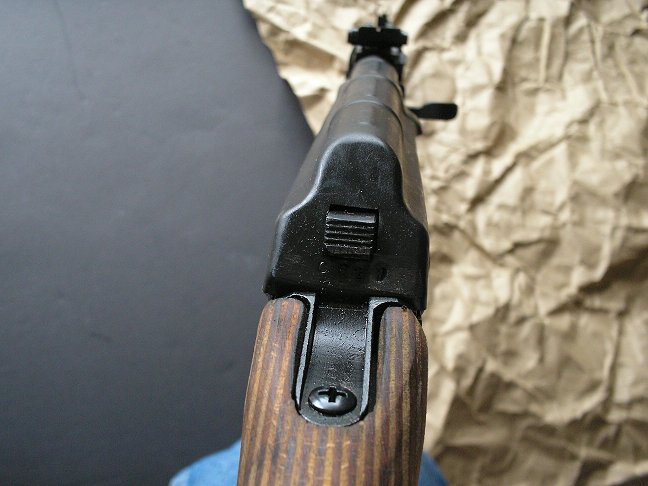
This will reveal the inner works of the rifle.
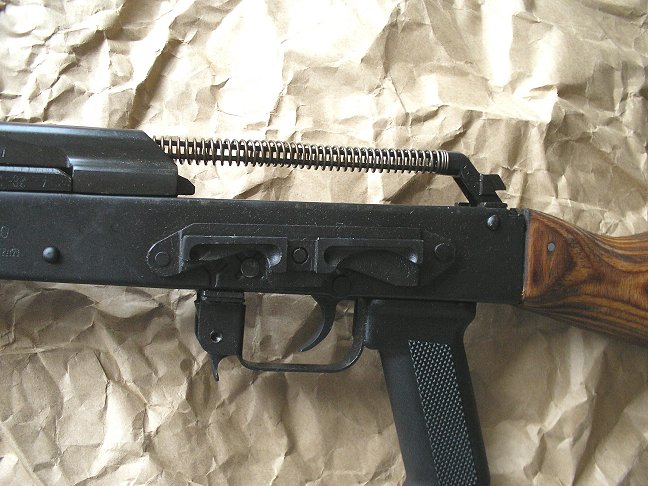
Push
the catch against the spring towards the front of the rifle in order to
free it. Keep your hand on it and don’t let anything come
flying free.
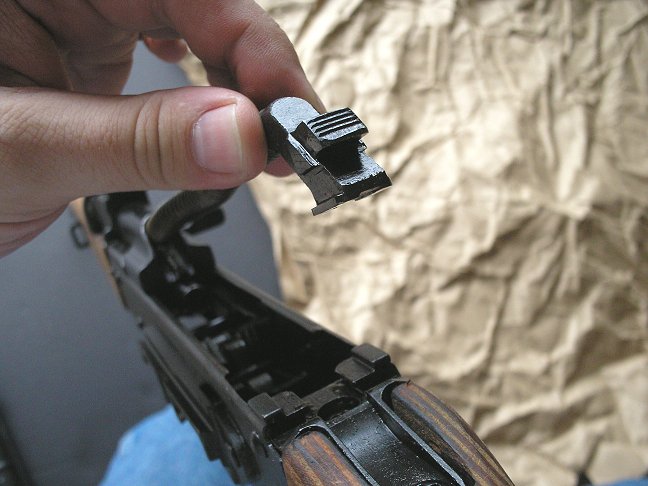
Then
remove the spring, the bolt, and the
plunger assembly from the rifle, as you would normally do to clean it.
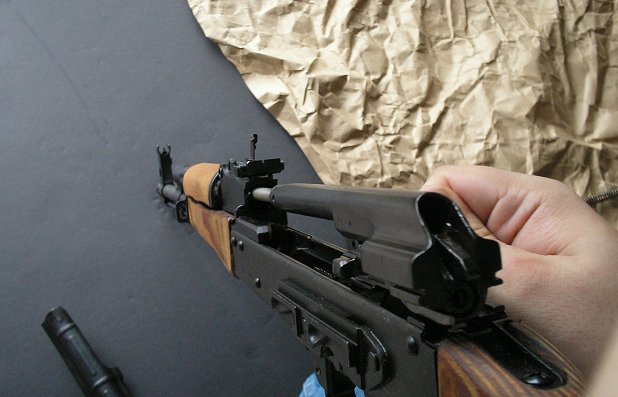
First we’ll tackle the rear stock. Removing the
spring and catch assembly reveals the screws that hold the buttstock in
place on the receiver. Unscrew them and remove the wooden
buttstock.
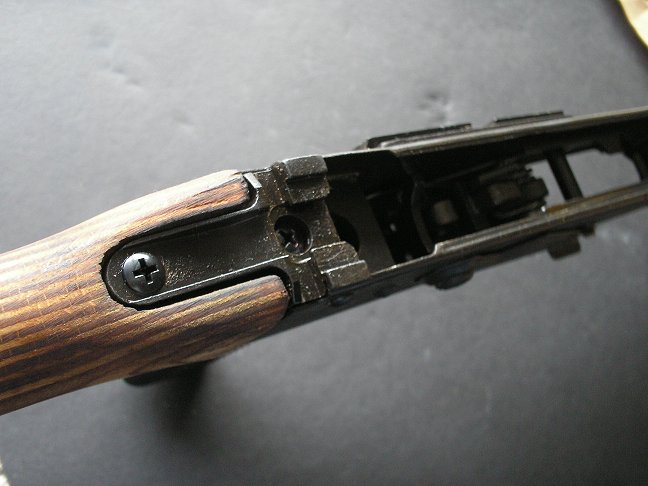
When you’re done disassembling to this point, you’ll have a
mess that looks like this:
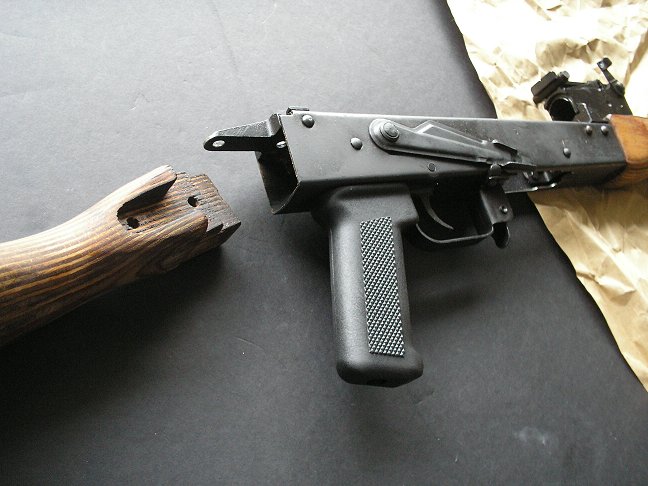
specifically because of variations in hole placement from rifle to
rifle.
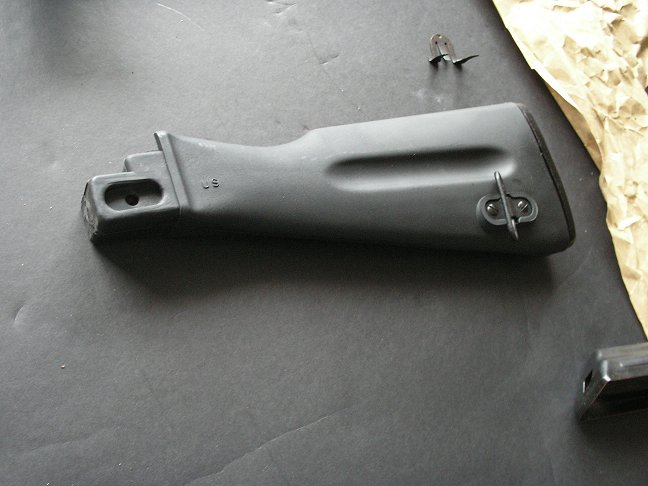
When you start, the
face of the plastic replacement stock will look like this:
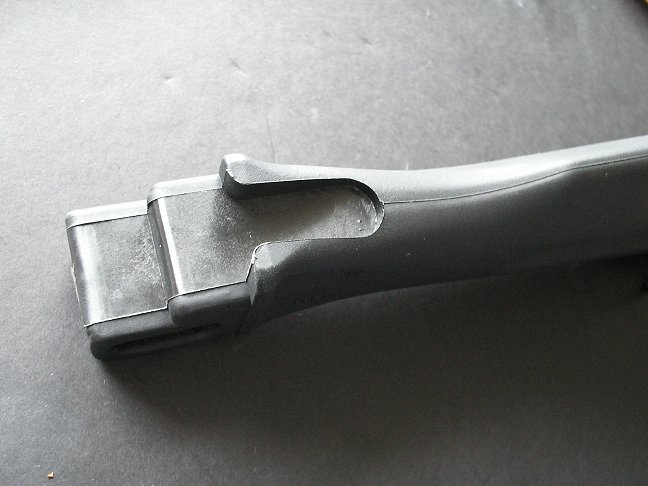
diameters until the holes are just large enough to permit you to screw
the stock back into the receiver.
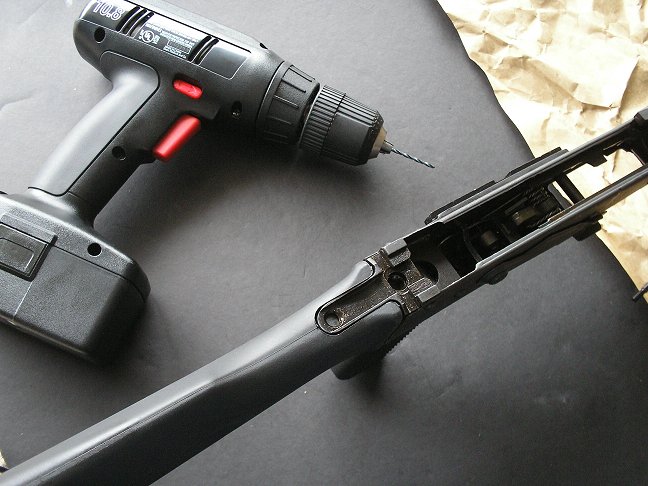
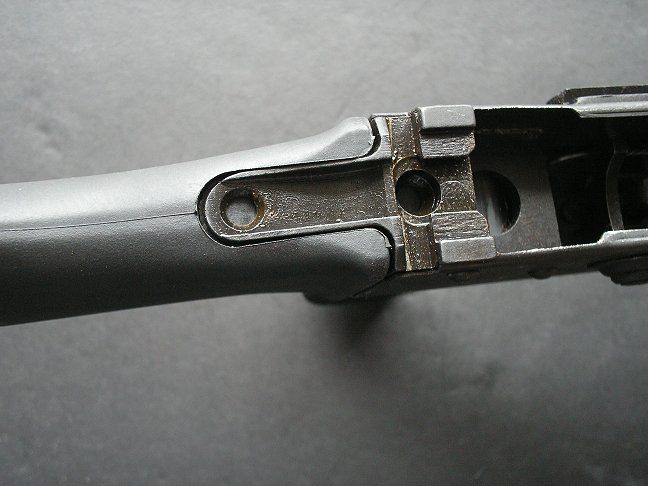
this. Wear breathing protection while drilling the plastic:
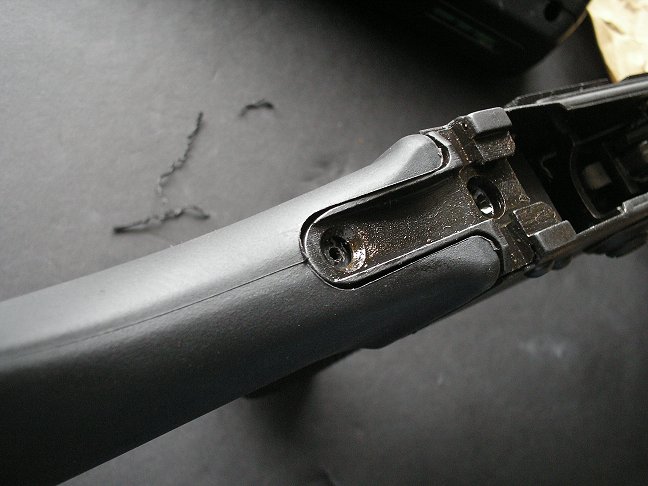
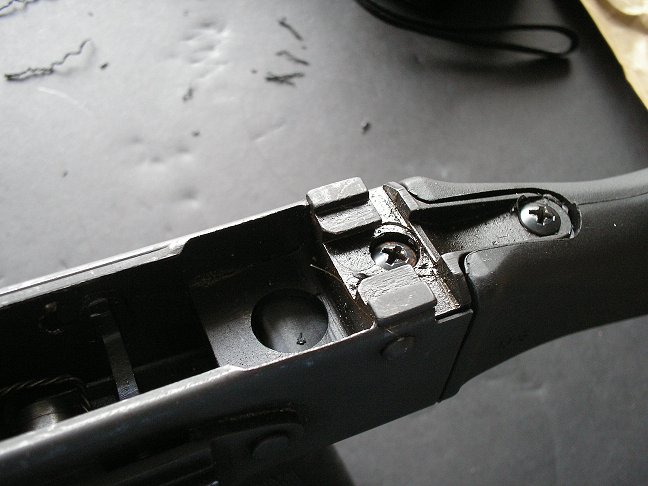
With the buttstock installed, it’s time to tackle the harder
part of this whole affair — the forehend and gas tube assembly.
You removed the plunger assembly before, so release the latch
holding the gas tube in place.
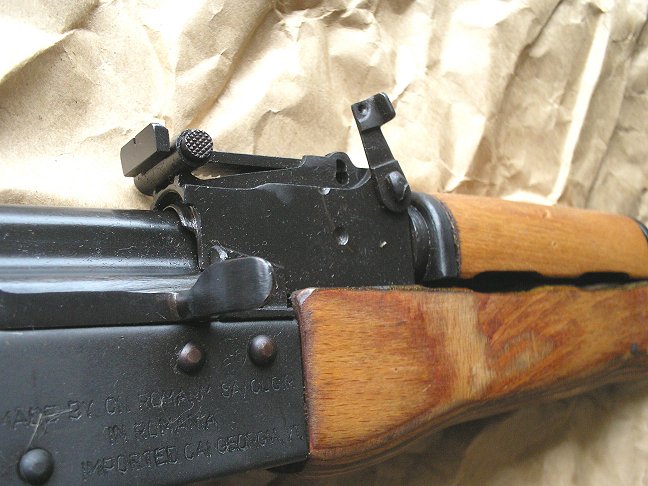
plunger assembly from the rifle, as you would normally do to clean it.
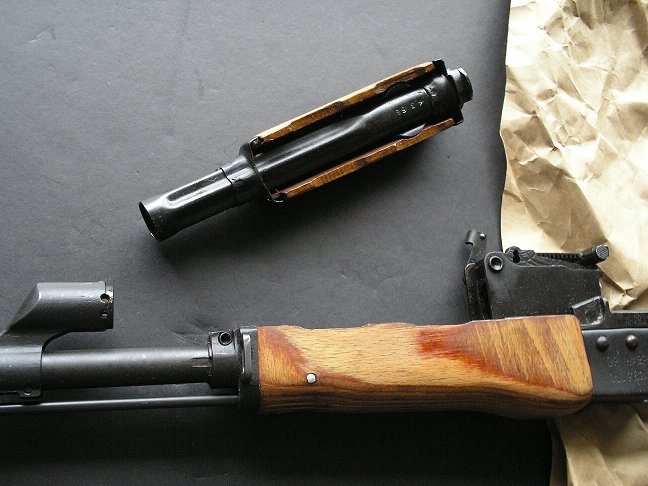
Removing the gas tube assembly reveals the metal catch the holds the
forearm guard in place.
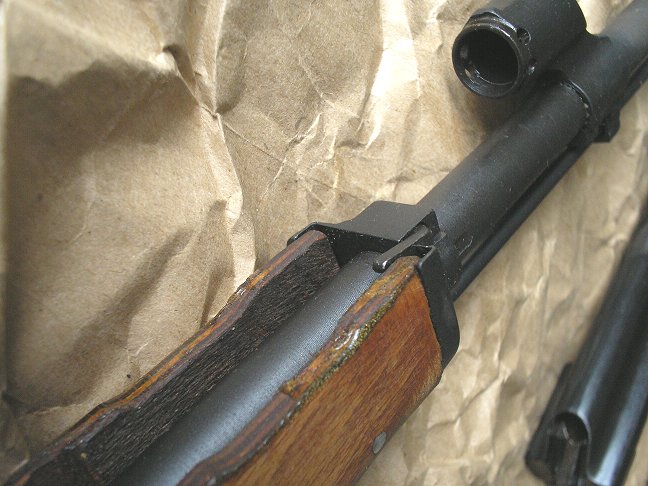
Use
a screwdriver to pry up the catch. This frees the metal
collar that holds the forearm guard in place.
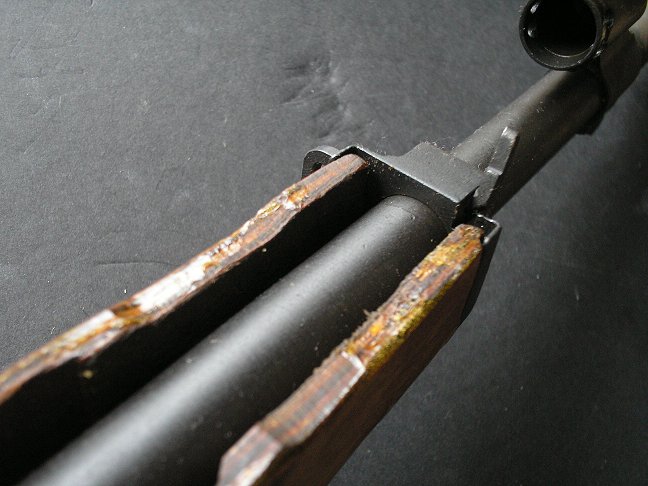
Jog the collar back and forth to wiggle it free from the forearm guard.
Move the collar forward enough so you can pull the forearm
guard away from the receiver and remove the guard completely.
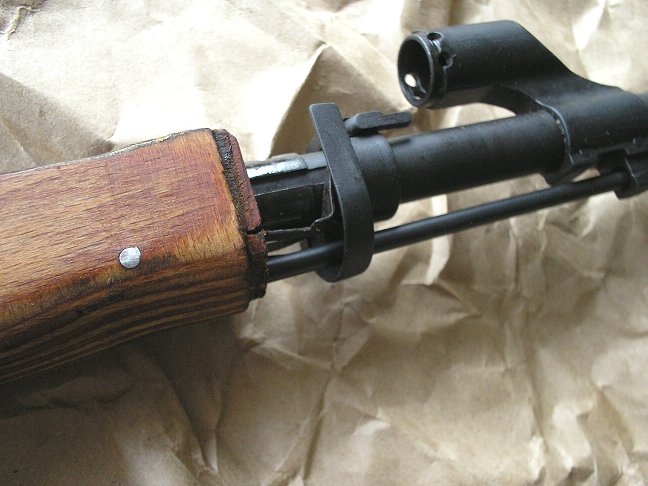
When
you’re done, you’ve got something that looks like this. You
probably won’t be able to replace the cleaning rod carried under the
barrel on some models.
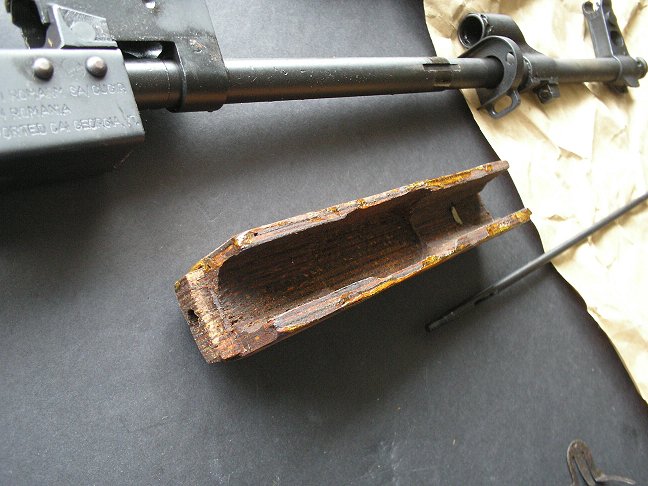
Snug
the collar back into place at the front of your replacement forearm
guard, being sure to guide the forearm guard into the receiver.
You want to get the whole thing as flush as possible, though
there will probably be some gaps based on differences in the new
forearm versus the old one. When you’re ready, move the metal
retaining bar back into place over the guard to hold everything
together.
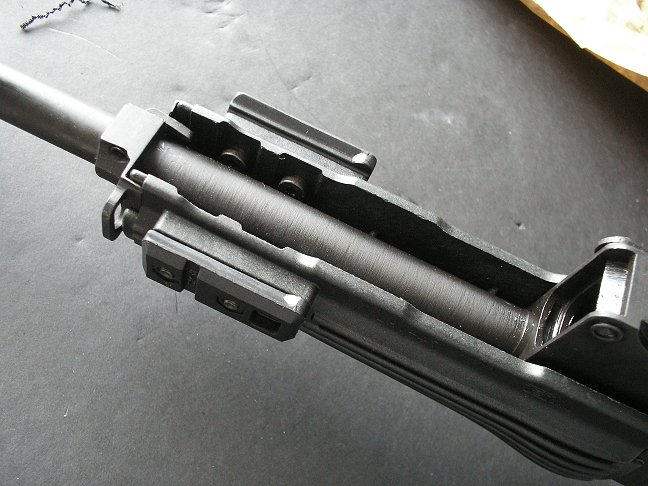
Your
new forearm guard is now ready for accessories.
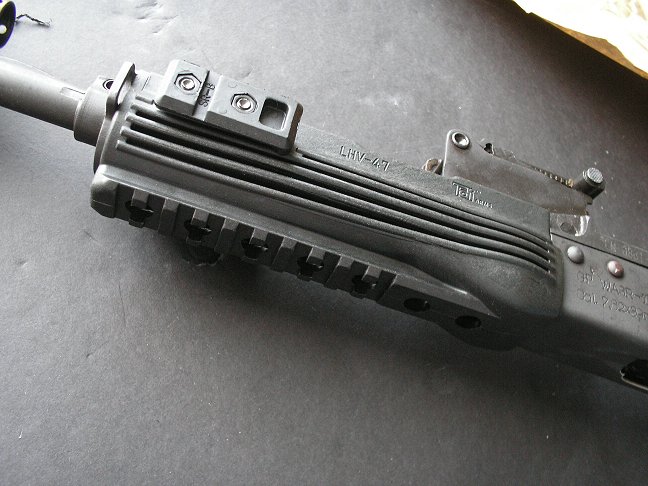
We’ve
saved what is by far the biggest pain in the ass for last.
Replacing the wooden guard over the gas tube assembly is an
unpleasant chore. You might use a mounted vice to make this
easier, if you have one. I didn’t, so I did it the hard way.
The
wooden guard must be turned upside down on the gas tube assembly in
order for it to come away from the collar holding it in place.
Carefully grasp the gas tube assembly with a wrench and turn
the wooden guard upside down, rotating it in your hand.
Gloves help a lot. Be careful not to chew up the
gas tube assembly with your wrench. (Engage
the flat portions of the gas tube with the wrench, rather than the
round parts as shown in the figure — this shot is just of me getting
ready to do the deed).
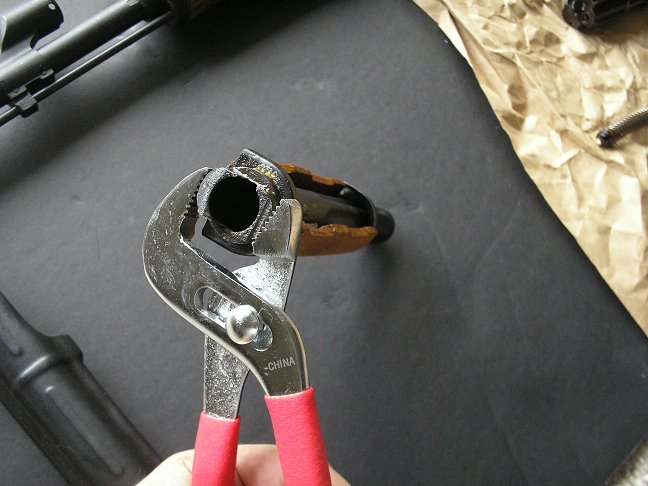
After
what may be a great deal of effort, you’ll have the wooden gas tube
cover free. Throw it as far away from you as you can get it,
because I guarantee you’ll hate the thing by now. Feel
better? Good, you’re ready for the last part.
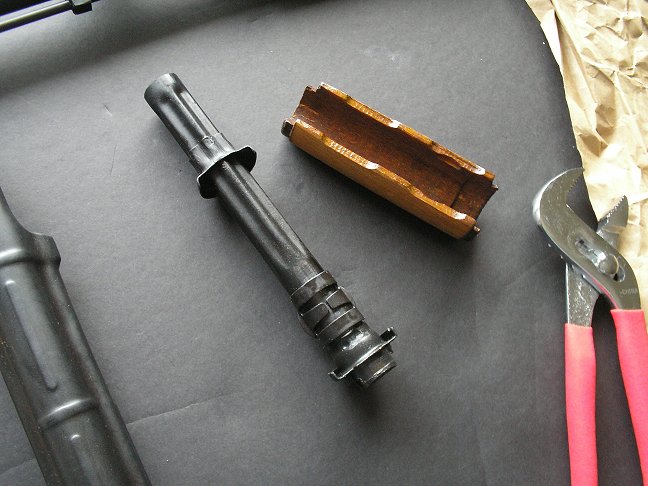
Using essentially the same procedure (though you may be able to use
just your hands depending on the fit of the replacement gas tube
guard), insert the new gas tube guard upside down and then rotate it
into place within the gas tube’s collars. When you do it right,
it will look like this:
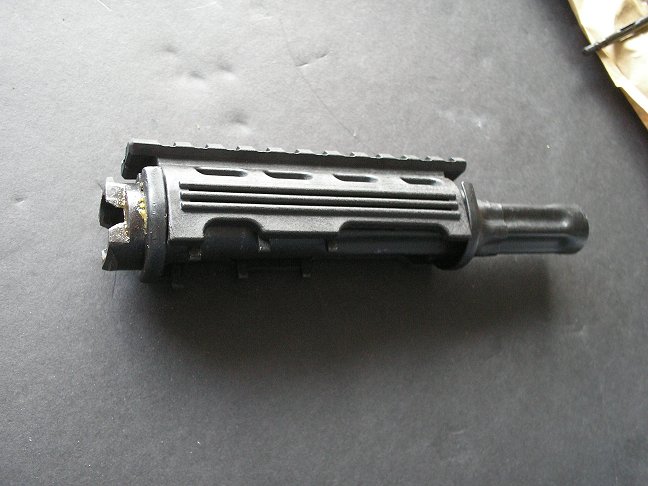
Replace the gas tube assembly. The latch will
probably be harder to move into place to retain the gas tube than it
was before. This is a function of the fit of the new parts.
Push it down and get it latched.
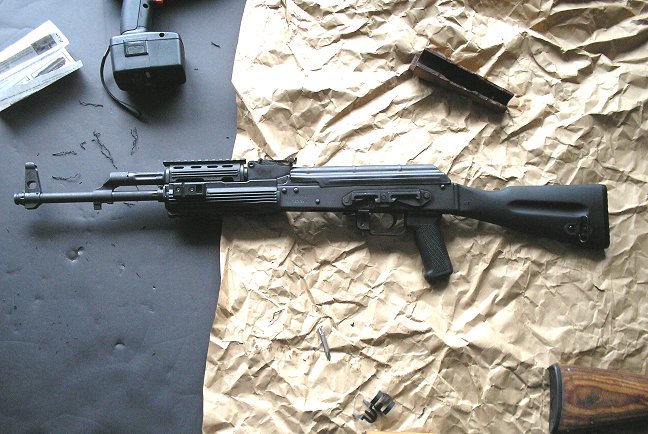
There are a couple of different ways to mount a light to the rifle,
to complement the vertical forearm you can install on the accessory
rails. You might use an ATI
barrel clamp, for example, in conjunction with a Streamlight
Scorpion.
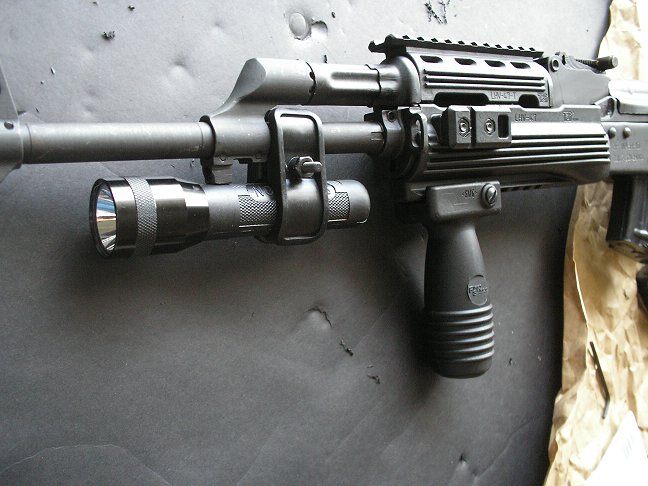
Given that this clamp is made of glass-filled Nylon and
mounted directly to the barrel, there is the possibility that extreme
heat could affect it. Keep this in mind when selecting your
accessories. Under reasonable use, given that the clamp is
intended to connect magazine tubes to shotgun barrels, I don’t expect a
problem. Should one occur it will be time to rethink the
flashlight mounting, possibly offsetting it to one side in order to
clear the cleaning rod housing that caused the issue in the first
place. It would disappoint me to lose true ambidextrous
operation of the light, but you can’t have everything (especially in an
AK, whose ergonomics are not exactly great).
One of the options I tested was a Tacstar
light with a remote switch. Some people prefer these for ease
of operation, but remember that any light with a cord could conceivably
be put out of action if the cord becomes damaged.
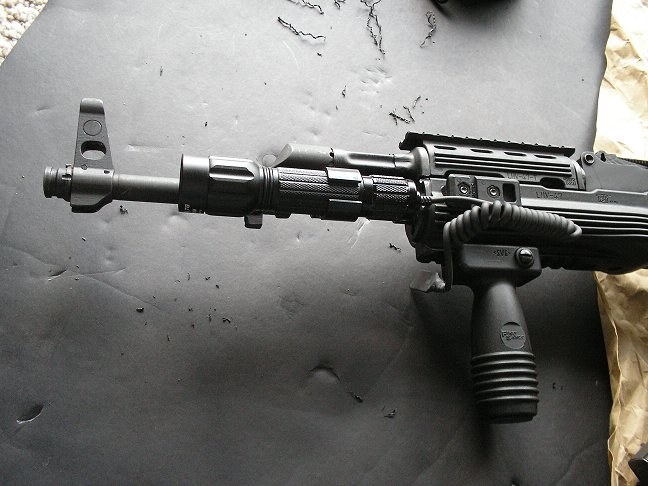
Congratulations. You’re finished. Your plain,
brown-wrapper AK is now a tactical, tacti-cool assault weapon. You can
accessorize it to your heart’s content
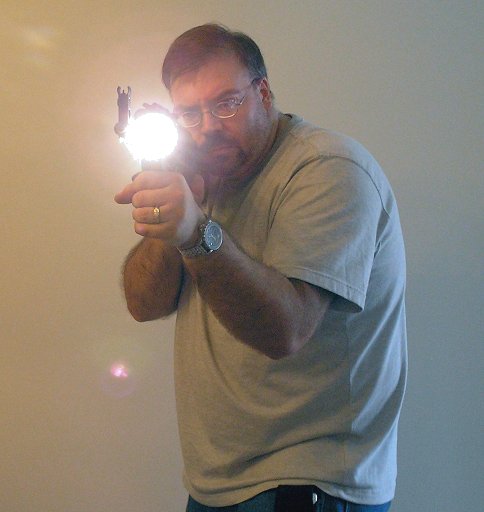
Have fun and shoot safely.
